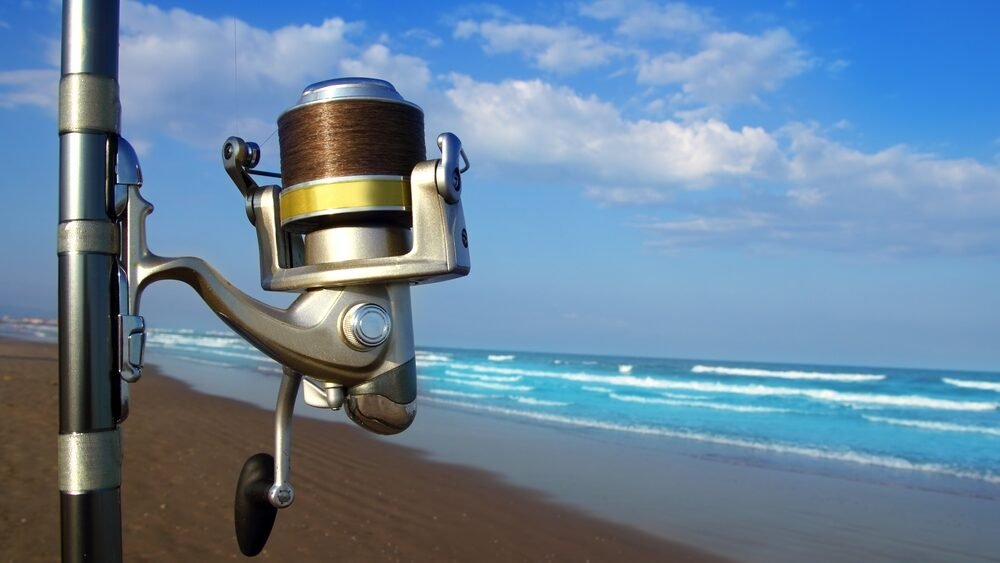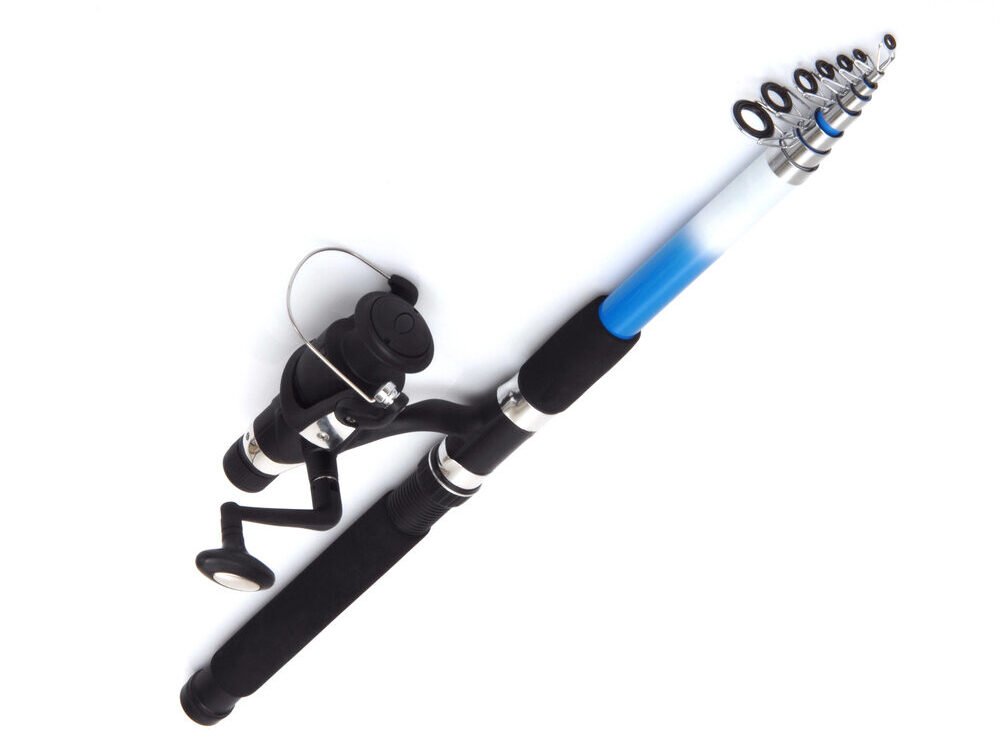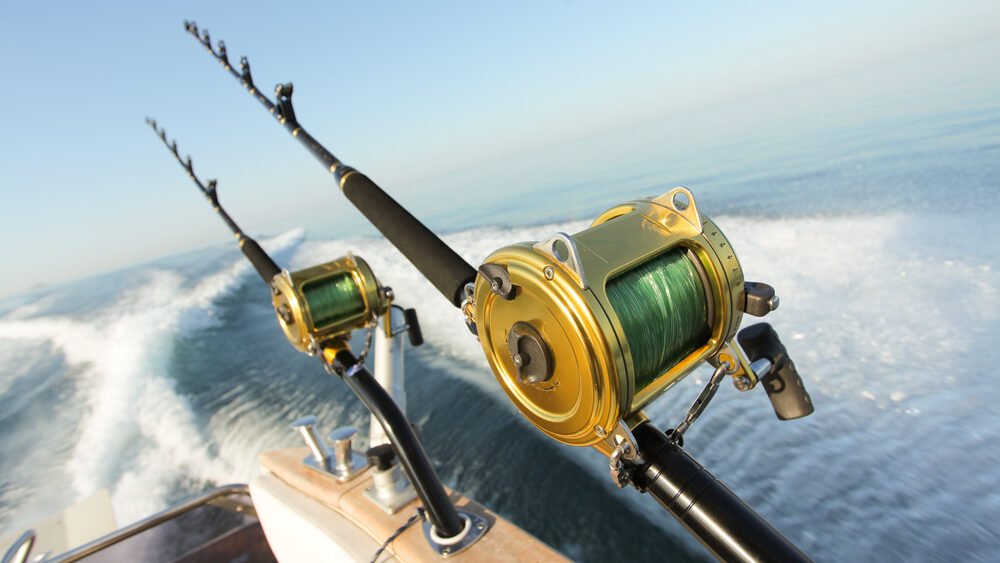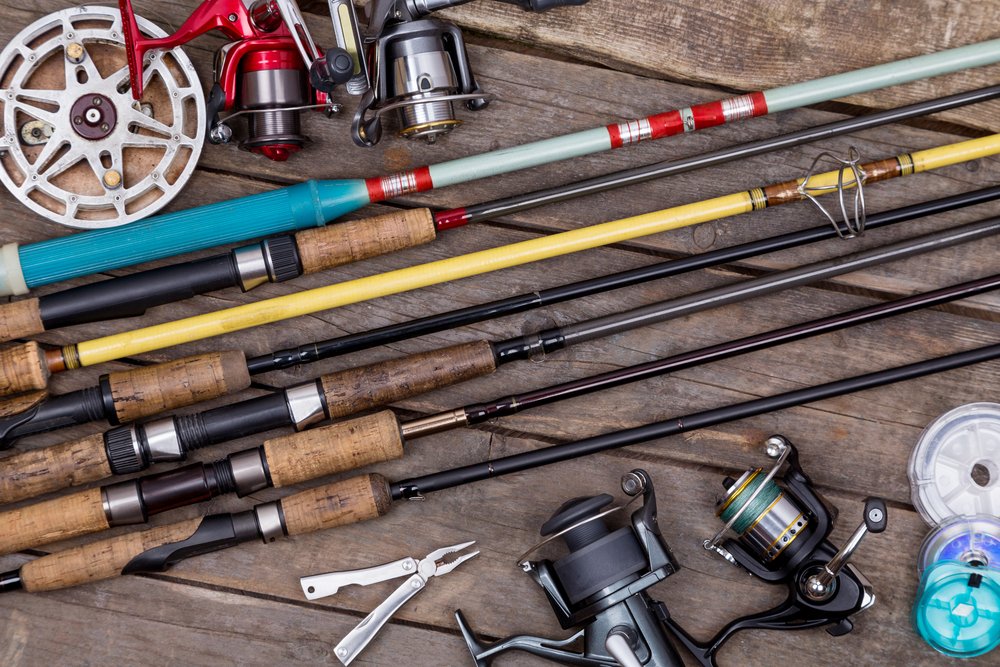Fishing 101: The Different Types of Fishing Rods and Reels
Having the wrong rod and reel combo isn’t fun when you’re fishing. Unless your combo is so smooth that it feels like you’re casting an extension of your arm and effortlessly operating it, you could improve your setup.
There are so many types of fishing rods and reels. Once you learn the difference and how to use them, it can pay off in your fishing game. With the perfect combo, you will be ready to reel in fish so big that your friends will talk about them for years to come.
In this article, we will break down the different types of fishing reels, rods and gear so you can make an informed decision about which rod and reel to use to catch the most fish possible in your situation.
Types of Fishing Rods
When it comes to fishing rods, there are rods with casting reels, fly reels and various fishing lines. Reels come as either closed face or open face, and some have more versatility than others. Let’s unravel this tangled mess of information and clear it up once and for all.
Spin Fishing Rods

The spin fishing rod is the most popular type because they are practical for beginners. These fishing rods are long and thin and can flex a lot. They have a spinning reel, making them super smooth to cast and retrieve. They are a good all-rounder, often affordable and intuitive to use. Spin rods can be made of various materials and don’t focus on specific features such as durability or precision.
A spin fishing rod’s advantages are that it is flexible, lightweight, easy to use, practical to fish many species, and suitable for casting and practicing.
The disadvantage of a spin fishing rod is that it’s a generalist and decent at many things, but putting on heavy lures and pulling in colossal fish could break it into two pieces because it would need more durability. Also, it would be tricky to try fly fishing or troll with it.
Spin Casting Fishing Rods
A spin-casting fishing rod is a combination of a spinning and baitcasting rod. If you buy a fishing rod from the store that doesn’t have a reel, the label often says you can use it with both a spinning reel and a spincast reel. The differences usually don’t lie in the rod but in the attached reel, so read the part about spin-casting reels below. You can use a spin casting rod for smaller and medium fish, freshwater, or saltwater.
The benefits of a spin-casting rod are its practicality and high beginner-friendliness.
The drawbacks of a spin-casting rod are the same as with a spinning rod; they are less durable than baitcasters.
Baitcaster Fishing Rods

Baitcaster rods are fishing rods that use a baitcasting reel, and the pole is thicker, heavier, and more durable than the spin-casters and spin rods. They are better suited for experienced fishermen who target larger fish.
The advantages of baitcaster rods are that they are much more durable and give you more control when fighting big fish than spin rods.
The disadvantages of baitcasters are that they are more challenging to use and require some practice, skill, and muscle power to operate correctly. They are also heavier to carry around or unpractical to travel with.
Fly Fishing Rods
A fly fishing rod is long, thin, and flexible and uses a specific type of line, reel, and lures that resemble a fly. Fly fishing aims to mimic an insect in water to catch freshwater fish such as trout, salmon, bass, and more. The lure you use is a single hook, and the lure’s body has many hairs and threads sticking out from it to resemble the antennas, hairs, legs, and wings of a flying insect. If you want to fly fish, you must practice first, as it requires a particular technique to do it right and cast the line with distance and precision. Fly fishers often wade into the water to cast, as the rod doesn’t allow for the same reach as a spinning rod. Often they stand 20-50 feet from where they want to cast the lure, far enough not to scare the fish but close enough to precisely hit the right spots where the bigger fish are hiding or be able to cover the whole width of the river.
The pros of fly fishing rods are it is the most active and fun way of fishing and are excellent when targeting specific fish species as it mimics their natural prey.
The cons of fly fishing rods are that they require the correct technique, and a fly rod would be impractical for any other type of fishing.
Telescoping Fishing Rods

A telescoping fishing rod is collapsible like a telescope, which makes it very practical and portable. Instead of having parts and ferrules that connect them, the smaller pieces contract into the larger ones down to the reel seat.
The benefits of a telescopic rod are that it’s portable, excellent for travel, comes in various types and sizes, and you can use it for fresh and saltwater. They are versatile, and you can equip them with a spinning or spincast reel.
The drawback of a telescoping rod is that it is less durable than one- or two-piece rods, so you can’t catch as big fish and may experience a shorter casting distance and accuracy compared to one-piece rods.
Fishing rods and reel combos
A rod and reel combo is a complete set you can purchase from the fishing store with both the rod and reel. These are often spin rods that are very common for beginners but can also be a combination of other rod and reel types.
The advantages of a fishing rod and reel combo are that they are affordable and convenient, as you don’t have to figure out which parts to buy, beginner-friendly and versatile.
The disadvantage of a fishing rod and reel combo is that it is not customizable to your specific needs. Changing the reel or the rod leaves you with an unused item.
Ultralight fishing rods
The point of an ultralight fishing rod is to minimize its weight, and manufacturers may use materials such as carbon fiber, fiberglass, or graphite to make it. A typical ultralight fishing rod can weigh 100-200 grams but still catch fish up to 3-4 kg or 6-8 lbs. The ultralight rods are flexible, and the tip is sensitive, so you feel the moment the fish bite so you can hook it quickly. Some ultralight rods are strong enough to catch fish up to 9 kg or 20 lbs, but you should read the label to see what the manufacturer recommends as the limit. Many people pair the rods with a lightweight reel and fluorocarbon line for the perfect ultralight setup.
The pros of an ultralight rod are that it’s lightweight to carry and transport, works great for small fish, and is available in different sizes and materials.
The cons of an ultralight rod are its low durability, limited to smaller fish, and often made of more expensive materials.
Surf Fishing Rods
A surf fishing rod, also called a beachcaster, is long and heavy, often 10-12 feet long, and mainly used when casting from land or on a beach. People call it a surf rod because you use it to cast through the surf on the seashore. The most common reels on a surf rod are saltwater spinning reels or baitcaster reels.
The benefits of a surf fishing rod are that it can cast long distances, catch large fish, and is durable.
The drawbacks of a surf fishing rod are that it is heavy and challenging to cast and use, is less versatile than other options, and is not ideal for freshwater.
Trolling rods

A trolling fishing rod is a long and durable rod with a trolling reel, primarily used for trolling, which is the fishing technique where you cast the line from a boat, and then drive the boat while the line and lure are dragging after the boat, hoping that predator fish will swim after and hunt it. Once the fish bite, the fisherman will hook it and reel it in. Anglers often use trolling rods for catching larger saltwater fish such as tuna and marlin.
The advantage of a trolling rod is that it’s durable, excellent for catching giant fish and can be used on boats.
The disadvantages of a trolling rod are that it’s heavy, requires technique and muscle power to handle, and is not practical for any other type of fishing.
Ice fishing rods

An ice fishing rod is a short pole that you don’t cast but rather release line into a hole in the ice. Ice fishers drill holes in the ice and fish using a lure or bait and wait for the fish to bite. Anglers target small fish species when ice fishing.
The pros of an ice fishing rod are that it’s good for catching small fish through the hole in the ice and is easy to use.
The cons of an ice fishing rod are that it’s limited to fishing small species, difficult or impractical to cast, and not durable for fishing large species.
The 4 Types of Fishing Reels
Spinning Reels
The spinning reel is an open-face reel and is the most common fishing reel. It is a genius invention with a drag adjustment, bail arm, line roller, spool tension knobs, a handle, and an anti-reverse switch. It’s easy to use and feels intuitive after a bit of practice. You swivel the handle, and the bail arm guides the line onto the spool.
The benefits of a spinning reel are that it’s the easiest to use, the most beginner-friendly choice, and excellent for many fishing scenarios, such as using light lures, fishing from a boat, and casting from land.
The drawback of a spinning reel is that it is less accurate than other reel types and less durable for catching big fish than a baitcaster.
Spincast Reels
The spincast reel is similar to the spinning reel but is closed-face by having a cover over the mechanical parts of the reel and the line spool, so it is less likely to get tangled. It has a button to release the line instead of opening the bail arm as you would on a spinning reel.
The advantages of a spincast reel are that it’s a beginner-friendly choice, as they are easy to use, durable and reliable with less chance of tangling the line.
The disadvantages of a spincast reel are that it’s less accurate than other types and requires maintenance to ensure it works well because of its mechanics. It can also be frustrating to untangle because you must open the cover.
Baitcasting reels
A baitcasting reel is an open-faced reel with a line spooled on a spindle, and you retrieve the line by swiveling the handle. The baitcaster is meant for more heavy-duty poles and larger fish and has a level wind, star drag, clutch bar, and casting control knob.
The pros of a baitcaster reel are that it’s excellent for catching big and heavy lures and is robust, precise, and reliable. You can use it for catching bigger fish than with other reel types.
The cons of a baitcaster are that it may require some technique and skill to use correctly and is less beginner-friendly than a spinning reel or spincast.
Fly fishing reels

A fly fishing reel is for a fly fishing rod, and it is a simple spooled spindle with a line that you retrieve by swiveling the handle on the reel. Casting the line requires a particular technique and a lot of practice to master distance and precision.
The benefits of a fly fishing reel are that it’s best for casting light fly lures or small bait, and the reel is reliable.
The drawbacks of a fly fishing reel are that it requires practice and skill, can be challenging for beginners, and is limited to fly fishing.
These are the main types of reels. There may be other types out there, but they are mostly modified or have combined features of these different types. For example, a trolling reel can be considered a heavy-duty baitcaster reel.
Frequently Asked Questions
How Many Types of Fishing Reels are There?
There are four types of fishing reels, and they are baitcasters, spinning, spincast, and fly fishing reels.
What is the Best Fishing Rod For Beginners
The best fishing rod for beginners is a two-piece rod with a spinning or spincast reel. They are easy to learn, intuitive, and practical for most general fishing purposes.

